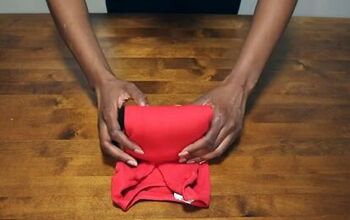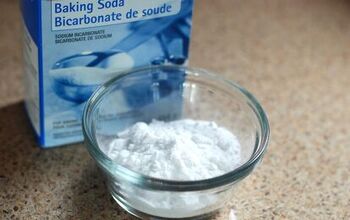How to Care For Clothing & Make Clothes Last Longer

I am not buying any more clothes this year because I'm taking this year to educate myself about how to care for clothing. I want to make my clothes last longer. I'm going to talk about how to identify high-quality clothes and how to treat my clothes better in general.
1. Think of your clothing as an investment
I'm a big thrifter. The pants I'm currently wearing, I got at a thrift store. That's where about 50% of my clothes come from. I got the top I'm wearing for free at a clothing swap. That's where the other 50% of my clothes come from.
Unfortunately, due to the increase of fast fashion, especially in the last five years, there is an absurd amount of poor-quality clothing at thrift stores.
Fast fashion has gotten so bad that popular reseller website ThredUp has banned fast fashion brands from their platform entirely.
Fast fashion is made as cheaply as possible with the intention that they wear out as quickly as possible so you will spend more money replacing them as soon as possible.
To make your clothing last longer, think of clothing as an investment by buying clothes with quality fabrics that fit you well, that comes in a silhouette you like, that is your style, and that is the color that works with your skin tone.
2. Buy high-quality fabrics
What are high-quality fabrics? Fabrics fall into two very broad categories: natural fibers and synthetic fibers.
Natural fibers are generally going to last you longer than synthetic ones.
Natural fibers are cotton, wool, silk, bamboo, and hemp. Synthetic fibers are polyester, rayon, acrylic, nylon, and spandex.
When shopping, you want to look for clothes made predominantly or entirely from natural fibers. A silk dress will last you a lot longer and stay in a much nicer shape than a polyester dress.
3. Designate at-home clothes versus outside clothes
I have been doing this for years, not even realizing that this is a way to protect my clothes. You want to have comfy, softer clothes that you wear inside the house, and you keep your nicer, more durable clothes for outside the house.
When we wear our clothes, our body oil and skin get all over them, meaning we must wash them. If you wear clothes for fewer hours, you don't need to wash them as much, and you don't get as much of your body stuff on them.
Dividing your clothes into inside and outside clothes means you'll wear each set for fewer hours, putting less wear and tear on them. That is going to extend the life of both sets of clothing.
4. Wash your clothes less
I know this one is a hard pill to swallow for a lot of my fellow Americans, but it is not necessary to wash all of your clothing after you've only worn them for five or six hours. Washing machines and dryers are hard on your clothes.
Many of the thicker fabrics we have, like jeans and wool, can go several wears between washes. Try to get between three and ten wears for each item before you wash it. This depends on what that item is, the type of fabric, and what you did in it.
If you're in a hot climate or have a job where you're getting dirty, those clothes need to be washed every time.
Otherwise, take the clothes you've worn for just a few hours, keep them separate from your clean clothes, and ventilate them. You can also utilize spot washing for clothes.
If you wore a shirt for a few hours and the armpits got slightly stinky, just wash the armpits. This will keep you smelling nice while protecting that shirt from the intensity of having to go through the washing machine with a harsh laundry detergent and then go into the dryer.
5. Repair your clothes
Just because that sweater started to pill or that sock has a hole in it doesn't mean you need to throw it out.
In the United States, we are all guilty of throwing out a lot of perfectly good clothing just because it's not in style anymore, it got a little faded, or there was a tiny little hole at the bottom.
Those clothes are still good, I promise. Also, every time you throw out a piece of clothing, it is like throwing out money, especially if it's just something that's got a teeny tiny hole in it. That's like throwing the $26 you spent on that shirt right into the garbage. That's not what we're about this year.
This year we are learning how to repair our clothing. You can learn how to darn a sock. You can learn how to do minor hand sewing to fix clothes and buy things like a sweater shaver, so you can get that pilling that happens on many of our sweaters off and extend the sweater's life.
Join me in making this year the year that we step back a bit from consumer culture and start repairing the things we already have.
6. Wash your clothes smarter
As I mentioned before, washers and dryers are incredibly tough on your clothes. Make them less so by washing your clothes on cold, using less detergent, skipping using plastic-wrapped detergent pods, and air drying your delicate clothes.
If you're going to use a dryer, make sure to skip the dryer sheets and the fabric softener.
They both work by degrading your clothing, making them more susceptible to tears and odors over time.
7. Store your clothes properly
Not all clothes were born to live in a bureau or to be folded into a drawer. Coats should be stored in bags in their off-seasons, which will protect them. Hats can be stored in hat boxes. Sweaters should always be folded instead of hanging in the closet.
Sticking to the proper storage technique for a specific piece of clothing will help keep it in better shape for longer.
How to care for your clothing
So that's it for how to care for clothing and how to make clothes last longer. Let me know in the comments if you've got more tips for extending the life of clothes. This is the year to look great while wasting less.






















Comments
Join the conversation